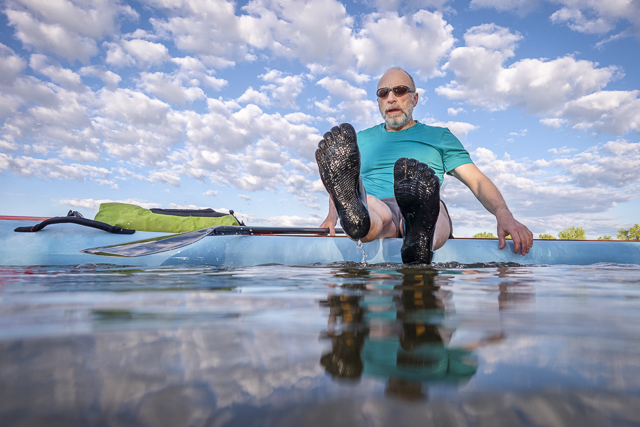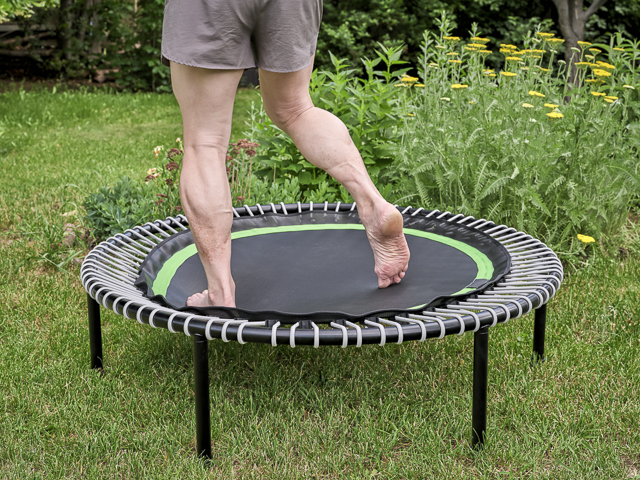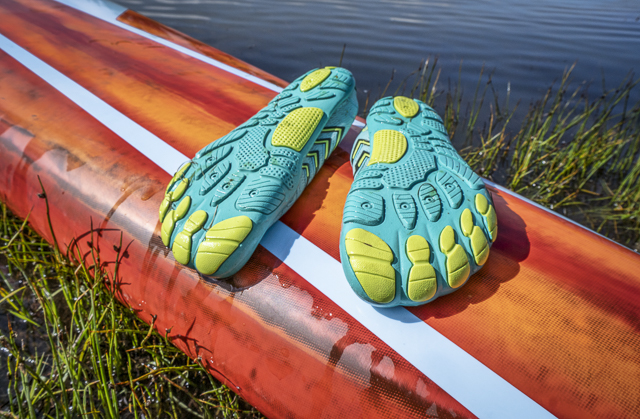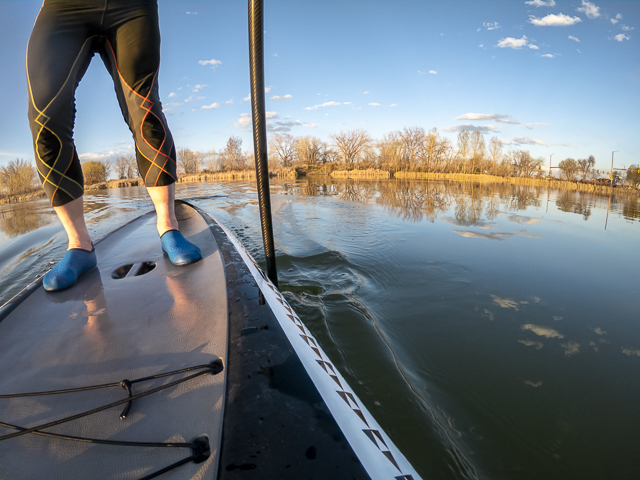Endurance paddling races like the Missouri River 340 can be physically demanding, often leading to leg fatigue and discomfort. Common problems include sore muscles of legs, especially calves, and also numbness of feet and toes. To ensure an enjoyable and successful race, it’s crucial to prepare and implement strategies that alleviate leg fatigue.

Preparation and training
Preparation and training are key factors in reducing leg fatigue during a long-distance stand-up paddleboarding race. Here are some tips to help you prepare and train effectively:
- Gradual Progression: Begin your training early and focus on gradually increasing the length and intensity of your paddling sessions over several weeks or months. This approach will allow your legs to adapt and build endurance without excessive strain.
- Optimal Paddleboard Selection: Choose a paddleboard that suits your race, goals, and skill level. The board should strike a balance between speed and stability. For long-distance paddling, opt for a longer paddle with a smaller blade, which promotes a relaxed posture and reduces strain on your legs. Ensuring you are comfortable on your board is paramount.
- Practice in Various Water Conditions: While paddling in calm waters may feel comfortable, it’s essential to train in challenging conditions like crosswind chop. This type of practice will improve your balance and stability, enabling you to handle any situation during the race. Keep your toes and feet relaxed.
- Balancing Exercises: In addition to your regular paddling training, incorporate exercises that challenge the balance muscles in your legs. Trampoline rebounding, rope jumping, balance board or Bosu ball exercises, and using a vibration plate are excellent ways to enhance your balance and stability on the board.
- Active Lifestyle: Incorporate movement into your daily routine. Consider using a standing desk, as prolonged standing can strengthen leg muscles and enhance posture, which can translate to better performance on the board.
- Posture and Alignment: Pay attention to your posture and alignment. Refer to resources like the Yoga for Paddling book by Anna Levesque or explore the Align Method book by Aaron Alexander to learn techniques for maintaining proper form while paddling and in your regular life. Additionally, consider seeking foot massages, reflexology sessions, or chiropractic adjustments to alleviate any existing discomfort or imbalances.
- Life on board: Practice different paddling and resting positions on your paddleboard.
By following these tips, you’ll be able to build up your endurance and strength, improve your balance and stability, and reduce the risk of leg fatigue during a long-distance stand-up paddleboarding race. Remember to start slow and gradually build up your training, and to always listen to your body to avoid injury.

Racing
While preparation and training are essential, there are also several practices you can implement during the race to reduce leg fatigue. Here are some tips:
- Vary Your Paddling Stance: Regularly change your paddling stance and wiggle your toes to keep the blood flowing and prevent cramping.
- Alternate Positions: During the race, alternate between standing, kneeling, or sitting positions. This practice helps relieve pressure on your calves and improves leg circulation. Utilize a sleeping pad as a cushion for your knees while kneeling and a small cooler or other support when sitting, as sitting on your heels (seiza sitting) for extended periods may become uncomfortable.
- Footwear Alternation: Switch between wearing water shoes or sandals and paddling barefoot. This variation reduces pressure on your feet and minimizes the likelihood of numbness. Don’t forget to apply sunblock to your feet to protect them from sunburn.
- Compression Gear: Consider wearing compression sleeves, thighs, or socks to improve circulation and reduce muscle soreness during the race. Compression gear can provide added support and aid in recovery.
- Rest Breaks: Take advantage of the rest breaks that a paddleboard offers. During these breaks, try different positions such as sitting in various styles, sitting with your feet in the water, or even lying down for a while. Be mindful of your surroundings, including obstacles and boat traffic. Use these breaks for hydration, eating, and body maintenance.
- Stretching and Self-Massage: Incorporate stretching exercises and self-massage techniques into your race routine. Stretching helps prevent muscle stiffness and relieves tension in your legs. Some exercises can be performed while on the water, but remember to also perform them when stopping on a shore. Here are a few recommendations:
- Calf massage: While standing on the board, shift your weight onto one foot and use the other foot to massage your calf muscle. Use a kneading motion to work out any knots or tightness in the muscle.
- Foot massage: While seated on the board, remove your shoes and use your hands to massage your feet. Use your thumbs to apply pressure to the arches of your feet, or roll a water bottle under your feet to massage the soles.
- Stretching: While paddling, take breaks to stretch your legs and feet. You can perform simple stretches like flexing and pointing your toes or stretching your calf muscles by leaning forward and pressing your heels down.
- Mental Distractions: Distract your mind from leg discomfort by setting smaller milestones or goals within the race, such as reaching a specific mileage marker. Additionally, listening to music or podcasts can help keep your mind occupied and divert your attention from any discomfort you may be experiencing. Consider open-ear bone conducting headphones for safety.

Remember, these tips should be adapted to your individual needs and preferences. By integrating them into your training and race strategy, you’ll significantly reduce leg fatigue and enhance your performance in long-distance stand-up paddling races. Remember to maintain a consistent pace, stay hydrated, and always listen to your body to prevent injuries.
Do you have any additional tips? What is your “leg” experience in endurance paddling races?
Some resources:
- How to Prevent Sore Feet while Stand Up Paddleboarding
- SUP tips: Keep feet from going numb & moving around on a Stand Up Paddle board

You must be logged in to post a comment.